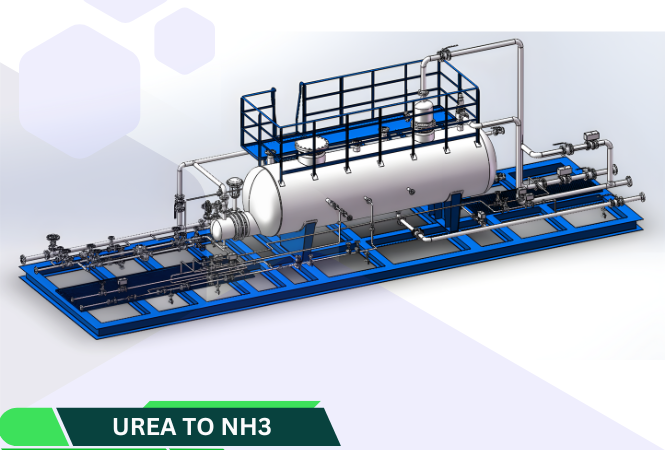WORKING PRINCIPLE
The Draft Tube Baffle Crystallizer (DTB) consists of five basic elements:
Crystallizer vessel.
Circulation pumping propeller
Baffles
The circulation pump.
The heat exchanger.
It is specially designed to produce coarse crystals with narrow size distribution. The DTB can produce large size particles (up to 3mm) due to its gentle agitation of growing crystals with very limited breakage. It has a controlled residence time for optimal growth and a long operating cycle with limited encrustations.
.png)

Particular features:
Low secondary nucleation due to low mechanical energy input (internal circulation)
Removing of fines (d < dcritical) from the internal baffle
Efficient fines destruction due to heating and/or dilution
Production of large size crystals (up to 3mm)
No or little heat make-up (fine dissolution)
Controlled residence time for optimal growth
Long operating cycle with limited encrustation
Appropriate for vacuum cooling (no external loop) and evaporative crystallization (moderate capacities)
Compact arrangement
.png)
Basic Principles of the DTB Crystallizer
Growing crystals are brought to the boiling surface where supersaturation is most intense, and growth is most rapid.
The baffle permits separation of unwanted fine crystals from the suspension of growing crystals, thereby affecting control of the product size.
Sufficient seed surface is maintained at the boiling surface to minimize harmful salt deposits on the equipment surfaces.
Low head loss in the internal circulation paths makes large flows at low power requirements feasible.
APPLICATION INDUSTRIES
Inorganic chemical
Ammonium sulfate, Nickel sulfate, Peroxodisulfuric sodium, Alum, potassium chloride Barium chloride, Sodium nitrate, Soda ash, Silver nitrate , Sodium hydrogen carbonate , Potassium carbonate, Sodium Phosphate, Boric acid, etc
Organic chemical
Bisphenol-A, Caprolactam, Acrylamide, Hydroquinone, Adipic acid, Ammonium adipic acid Fumaric acid, Trehalose, Aspartame, Amino acid, etc


MODELS AND TECHNICAL SPECIFICATIONS
Key Specifications & Design Parameters |
|
| |
|---|---|---|---|
Parameter � | Typical Range | Impact on Crystallization | Remarks |
Impeller Speed | 50–300 RPM | Higher speed = smaller crystals (more nucleation) | Design on Request |
Draft Tube Diameter Ratio (D/Tank D) | 0.3–0.6 | Affects circulation efficiency | Design on Request |
Residence Time | 1–6 hours | Longer time = larger crystals | Design on Request |
Supersaturation Control | ΔC = 1–10% | Critical for crystal growth vs. nucleation | Design on Request |
Cooling/Evaporation Rate | Depends on solute | Faster cooling = more nucleation | Design on Request |
Slurry Density | 20–40% solids | Higher density = more collisions (attrition) | Design on Request |
Advantages vs. Other Crystallizers |
|
| |
Feature | Draft Tube | Scraped Surface | Stirred Tank |
Crystal Size Control | Excellent | Good | Poor |
Fouling Resistance | Moderate | Best | Poor |
Energy Use | Medium | High | Low |
Scalability | Industrial-scale | Limited by scraping mechanism | Easy |
Shear Sensitivity | Low-Medium | High (scraping) | Medium |
APPLICATION FIELDS
DOWNLOADS
DOWNLOADS
ENGLISH
ENGLISH


Add paragraph text. Click “Edit Text” to update the font, size and more. To change and reuse text themes, go to Site Styles.
UREA TO AMMOUNIA
.png)
Add paragraph text. Click “Edit Text” to update the font, size and more. To change and reuse text themes, go to Site Styles.
WFF EVAPORATOR
.png)
Add paragraph text. Click “Edit Text” to update the font, size and more. To change and reuse text themes, go to Site Styles.

